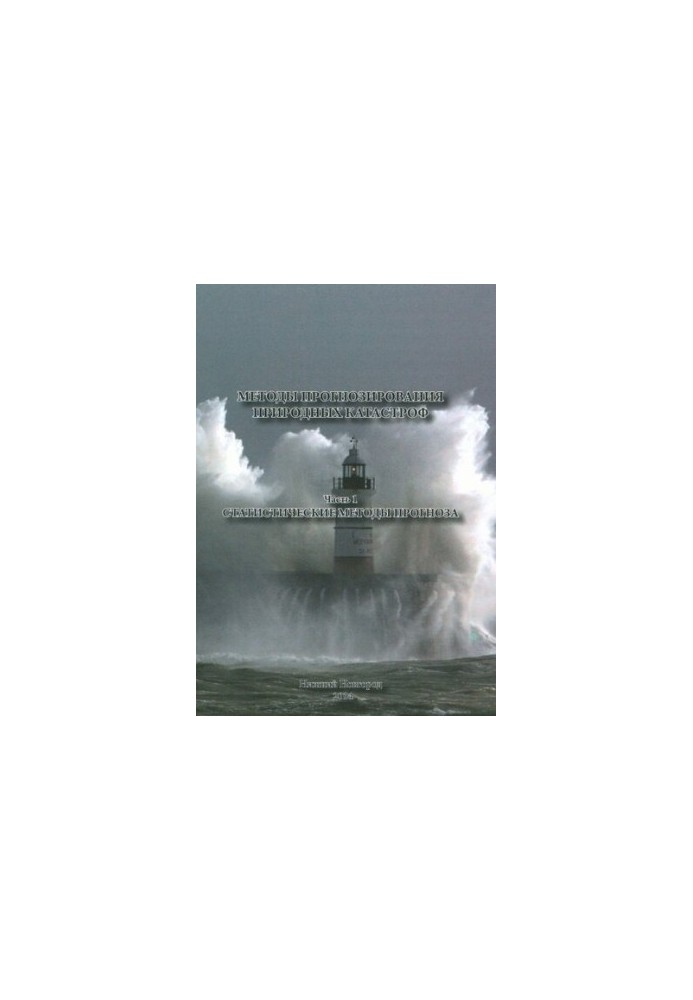Methods of forecasting natural disasters. Part 1. Statistical methods of forecasting
 Instant download
Instant download
after payment (24/7)
 Wide range of formats
Wide range of formats
(for all gadgets)
 Full book
Full book
(including for Apple and Android)
Methods of Forecasting Natural Disasters . Part 1. Statistical Methods of Forecasting by E. N. Pelinovsky, T. G. Talipova, and . and . Didenkulova and A. A. Kurkina is a unique and deep source of knowledge for all who are interested in modern approaches to predicting natural disasters. This book is an important link in a series of studies devoted to the analysis and modeling of natural disasters, and is intended for professionals, students and a wide range of readers seeking to understand the mechanisms of predicting natural hazards using statistical methods. The focus of this work is the use of modern statistical approaches to analyze data on natural disasters, such as earthquakes, hurricanes, floods and landslides. The authors masterfully reveal to the reader the principles of collecting, processing and interpreting statistical information, allowing to understand how exactly it is possible to predict the likelihood of such events and minimize their consequences. The book discusses in detail the methods of processing large amounts of data, building probabilistic models and assessing risks, which makes it an indispensable tool for specialists in the field of geophysics, meteorology, ecology and security. A special place in the book is occupied by practical orientation - the authors not only theorize, but also give real examples illustrating the use of statistical methods in disaster prediction. This makes the book a valuable tool for those involved in the development of early warning systems and disaster prevention. Readers will find here explanations of complex concepts in an accessible form, which makes it easy to master even the most complex statistical models and algorithms. "Methods for predicting natural disasters. Part 1. Statistical methods of forecasting” is especially suitable for young scientists, graduate students and students of specialized faculties, as well as specialists working in the field of monitoring and assessing natural risks. This book will be a good help for those who want to deepen their knowledge in the field of data analysis and learn how to use modern statistical tools to solve actual problems of predicting natural disasters. In addition, it will interest a wide audience interested in issues of ecology, climatology and natural hazards, because understanding the mechanisms of forecasting is an important step towards reducing the damage from natural disasters. The author’s style is a combination of scientific rigor and accessibility of presentation, which makes the book attractive for both professionals and curious readers. E. N. Pelinovsky, T. G. Talipova, I. and . Didenkulova and A. A. Kurkin is known for his work in the field of statistics and modeling of natural processes, and their joint work allows you to present the material in the most complete and understandable form. Their approach is based on interdisciplinary research, which makes the book relevant and in demand in the modern scientific world. If you are looking for a book that will help you understand how modern statistical methods can predict natural disasters and reduce their devastating effect, "Methods for predicting natural disasters. Part 1. Statistical forecasting methods" is exactly what you need. It will open new horizons in the study of natural hazards and will be a valuable assistant on the way to a safer and better prepared future.
LF/86104327/R
Data sheet
- Name of the Author
- А.А
Е.Н. Пелиновский
И.И. Диденкулова
Куркин
Т.Г. Талипова - Language
- Russian
- ISBN
- 9785502005289
- Release date
- 2014

















